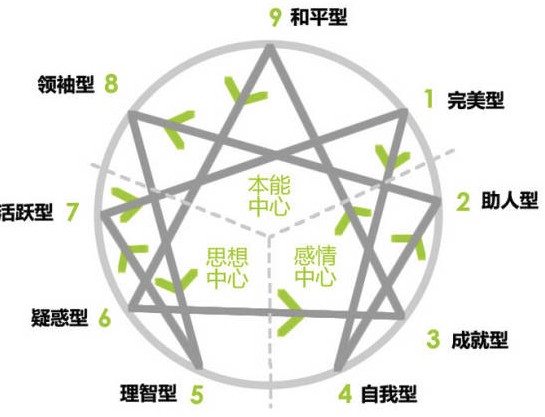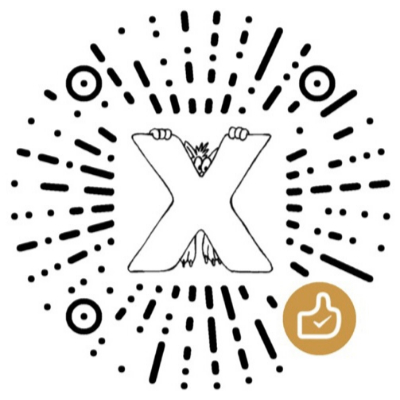Welcome to the Enneagram Personality Test! This is a psychological theory that describes human personality traits and behavior patterns. According to the Enneagram Personality Theory, each person is classified as nine different personality types, each with its unique characteristics, motivations, and behavior patterns. This test is a free beta version of the Enneagram Personality Test Questionnaire with 36 questions. In each question, select the sentences you think are most appropriate or closest to describing your personality behavior.
Enneagram in English, from two Greek vocabulary ennea and gram (grammos); ennea represents the number 9, and gram represents the graph. We can also call it 'Nine-Column Chart', 'Nine-Star Chart', 'Nine-Point Chart', etc., but for the sake of unification and easy identification, the most and comprehensive title is still 'Encro personality'. Enneagram personality, also known as personality morphology and nine personalities, is a psychological theory that describes human personality characteristics and behavior patterns. The theory was developed in the 1980s by Don Richard Riso and Russ Hudson, who combined the ideas of some psychologists and philosophers and applied it to the classification of human personality types. It includes activity level; regularity; range of interest; intensity of response; psychological quality; degree of distraction; range of concentration/persistence.
According to the Enneagram Personality Theory, each person is classified as nine different personality types, each with its unique characteristics, motivations, and behavior patterns. These nine types are marked as:
- The Perfectionist: Pursuing perfection, having a strong sense of morality and responsibility.
- The Helper: Pay attention to the needs of others and be willing to help others.
- The Achiever: The pursuit of success and achievement is highly motivated and goal-oriented.
- The Individualist: Focus on personal feelings and uniqueness, and pursue personal creativity and self-expression.
- The Investigator: Curious, rational and analytical, and likes to observe and understand things.
- The Loyalist: Security and stability are their concerns, and they are often wary of and guard against risks.
- The Enthusiast: Vibrant and optimistic, eager to experience a rich and diverse life.
- The Challenger: Confident, determined and leader-oriented, and likes to challenge authority and pursue justice.
- The Peacemaker: Desires to balance harmony with internal and external factors, and tends to resolve conflicts and maintain peace.
Everyone tends toward one or more of these types in the Enneagram theory, but there is usually a major type that describes their personality traits and behavior patterns. Enneagram Personality Theory is designed to help people better understand themselves and others to promote personal growth, enhance interpersonal relationships and improve communication effectiveness.
This is an encyclopedia of personality:

- Direction of personality degeneration:
1-4-2-8-5-7-1,3-9-6-3 - Character growth direction:
1-7-5-8-2-4-1,3-6-9-3
As shown in the figure, the Enneagram personality divides people into nine basic personality types according to different temperament types: perfect type, giving type, hard work type, romantic type, observation type, skeptic type, hedonistic type, leadership type and mediation type. Everyone must belong to one of them.
In the encyclopedia of personality, we call the character represented by No. 3-6-9 as the core personality, and the adjacent angles located on both sides of these three core corners are called the two wings of the core corner, representing the internalization or externalization of the core personality. In other words, the character of the two-wing angle is developed from the core angle personality, which contains the characteristics of the core angle personality and has potential common characteristics. For example, the two wings of the No. 3 personality - the 2 and 4 personality - the 3rd personality - the 5 and 7th personality - the 6th personality - the 5 and 7th personality are as suspicious and full of fear as the No. 6th personality. Psychologists further divided the enangels into three triples based on the three core personalities and their two wings.
- Emotional triple—The direct reaction when encountering things is derived from emotions, feelings and feelings: core personality—No. 3 practical type, internalization—No. 4 romantic type, externalization—No. 2 gift type
- Thinking triple-the direct reaction when encountering things is derived from analysis, understanding and induction: core personality-No. 6 doubt type, internalization-No. 5 observation type, externalization-No. 7 hedonistic type
- Instinct triple—The direct reaction when encountering things is to solve problems with immediate action: core personality—mediation of No. 9, internalization—perfect type of No. 1, externalization—leader type of No. 8: leadership type: core personality—mediation of No. 9, internalization—model of No. 1, externalization—leader type of No. 8:
It should be noted that in the nine-pillar chart, only the two wings of the horns 3-6-9 are manifestations of their internalization or externalization, while the two wings of other horns do not have such a relationship. For example, the two wings of the No. 8 personality No. 7 and No. 9 personality No. 8 personality is not the manifestation of the internalization and externalization of the No. 8. But even so, the two wings of any horn are very important because they will also have an impact on the character of the central corner. For example, the character of No. 4 may be biased towards the character of No. 5, keep everything in your heart, or towards No. 3, and use positive and excited expressions to cover up the depression deep in your heart.
Enneagrams are suitable for both adults and children. We will not change our main personality because we have learned the Enneagram or experienced different life experiences. However, life is dynamic, and people will constantly change their behavioral attitudes with different environments. The same is true for personality. When we begin to pay attention to our behavioral attitudes and care about our hearts, our personality will begin to move towards healthy growth; but when we are under pressure for a long time and do not give appropriate relief to our hearts, our personality will be in a direction of unhealthy degradation.
Enneagrams can accurately predict the direction of personality growth or degeneration, which is the difference between Enneagrams and other personality studies.
The direction of the arrow in the figure: the forward direction is the personality reaction type in the stress state, and the reverse direction is the personality reaction type in the relaxed state, which is the direction of growth and progress of this type. For example: Type 8 will show the characteristics of 2 when you are relaxed and happy. If you want to grow more, you need to learn the characteristics of type 2, and under stress, you will show the characteristics of type 5.
Learning the Enneagram Personality, growth and degeneration is one of the very important theories, which helps us understand ourselves more fully and clearly our reactions in life, and also reminds us that personality is only part of the mature self.
If you are interested in Enneagrams theory, we will provide you with more information on Enneagrams, Enneagrams and Enneagrams, as well as detailed instructions on Enneagrams. Enneagram Personality Theory is one of the most popular psychological theories in the world at present, and is widely used in corporate management, team building and personal growth. Many well-known companies and academic institutions are using the Enneagram theory to improve employee execution and team collaboration efficiency.
In recent years, the Enneagram personality has been highly praised by MBA students from internationally renowned universities such as Stanford University in the United States. It is one of the most popular courses today. In the past decade, it has become popular in the academic and business circles of Europe and America. The management class of the world's top 500 companies has studied the Enneagram personality and uses it to train employees, build teams, and improve execution. As a personality psychology theory, the Enneagram personality has not been recognized by the mainstream psychology community in the current society.
We hope that through this test, we will help you better understand your personality traits and behavior patterns, so as to promote personal growth, enhance interpersonal relationships and improve communication effectiveness. Please answer each question with confidence and we will provide you with a reliable Enneagram personality test results based on your answer.


